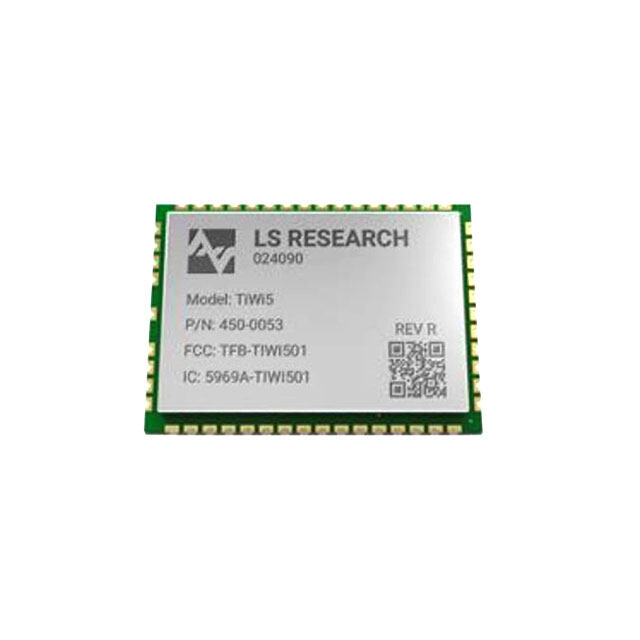ICGOO在线商城 > 射频/IF 和 RFID > RF 收发器模块 > 450-0037
- 型号: 450-0037
- 制造商: LS Research
- 库位|库存: xxxx|xxxx
- 要求:
| 数量阶梯 | 香港交货 | 国内含税 |
| +xxxx | $xxxx | ¥xxxx |
查看当月历史价格
查看今年历史价格
450-0037产品简介:
ICGOO电子元器件商城为您提供450-0037由LS Research设计生产,在icgoo商城现货销售,并且可以通过原厂、代理商等渠道进行代购。 450-0037价格参考。LS Research450-0037封装/规格:RF 收发器模块, 。您可以下载450-0037参考资料、Datasheet数据手册功能说明书,资料中有450-0037 详细功能的应用电路图电压和使用方法及教程。
Laird Wireless & Thermal Systems 的 RF 收发器模块型号 450-0037 主要应用于以下场景: 1. 工业物联网 (IIoT): 该模块适用于工业环境中的无线数据传输,例如传感器网络、远程监控系统和自动化设备。其稳定的射频性能可以支持实时数据采集与传输,确保工业设备的高效运行。 2. 智能建筑: 在智能楼宇管理系统中,450-0037 可用于无线连接各种传感器(如温湿度、光照强度等)和控制设备(如空调、照明)。它能够实现低功耗、高可靠性的通信,优化能源管理。 3. 医疗设备: 此模块适合需要稳定无线连接的医疗应用,例如可穿戴健康监测设备、远程患者监护系统或医院资产跟踪。其低延迟和高可靠性特性有助于保障医疗数据的准确传输。 4. 安防与监控: 在视频监控、入侵检测和其他安全系统中,450-0037 提供了可靠的无线通信解决方案,可用于传输报警信号或状态信息,同时支持多点组网功能。 5. 农业与环境监测: 模块可用于农田灌溉控制系统、气象站以及土壤湿度监测等场景。其抗干扰能力强,能够在复杂环境中保持稳定工作。 6. 消费电子: 该模块也可集成到智能家居产品中,如无线音响、家庭自动化控制器等,提供便捷的无线连接体验。 总体而言,Laird 450-0037 的高性能 RF 收发能力使其成为需要长距离、低功耗和高可靠性无线通信的理想选择,广泛适用于各类行业和应用场景。
| 参数 | 数值 |
| 产品目录 | |
| 描述 | MODULE TIWI-R2 U.FLWiFi/802.11模块 TiWi01-R2 Module with U.FL Connector |
| 产品分类 | RF 收发器射频/无线模块 |
| 品牌 | LS Research |
| 产品手册 | |
| 产品图片 |
|
| rohs | 符合RoHS无铅 / 符合限制有害物质指令(RoHS)规范要求 |
| 产品系列 | WiFi/802.11模块,LS Research 450-0037- |
| 数据手册 | |
| 产品型号 | 450-0037 |
| RoHS指令信息 | |
| 产品种类 | WiFi/802.11模块 |
| 传输供电电流 | 285 mA |
| 传输功率—最大值 | 20 dBm |
| 其它名称 | 4500037 |
| 功率-输出 | 20dBm |
| 包装 | 托盘 |
| 商标 | LS Research |
| 天线连接器 | U.FL |
| 天线连接器类型 | U.FL |
| 存储容量 | - |
| 封装 | Tray |
| 封装/外壳 | 模块 |
| 尺寸 | 18 mm x 13 mm x 1.9 mm |
| 工作温度 | -40°C ~ 85°C |
| 工作电源电压 | 1.8 V, 3.3 V |
| 工厂包装数量 | 100 |
| 应用 | Bluetooth v2.1 |
| 接口类型 | Bluetooth, SDIO |
| 接收供电电流 | 100 mA |
| 支持协议 | 802.11 b/g/n, Bluetooth |
| 数据接口 | 用于引脚的垫片 |
| 数据速率 | 11 Mb/s, 54 Mb/s, 65 Mb/s |
| 数据速率(最大值) | 65Mbps |
| 最大工作温度 | + 85 C |
| 最小工作温度 | - 40 C |
| 标准包装 | 100 |
| 灵敏度 | -89dBm |
| 电压-电源 | 3 V ~ 4.8 V |
| 电流-传输 | 280mA |
| 电流-接收 | 100mA |
| 调制或协议 | 802.11 b/g/n,Bluetooth v2.1+EDR |
| 调制技术 | DSSS, OFDM |
| 频带 | 2.4 GHz |
| 频率 | 2.4GHz |

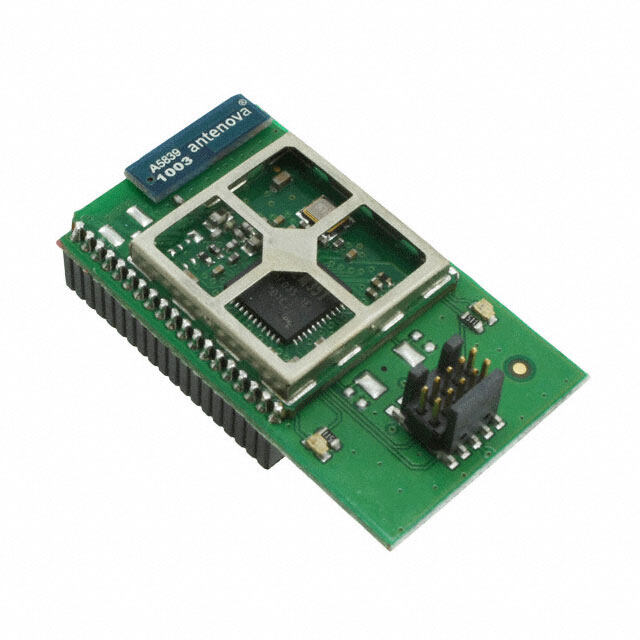
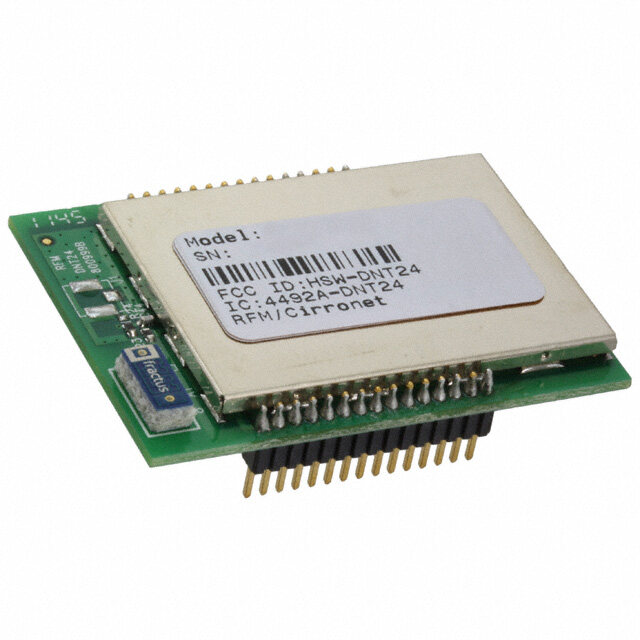

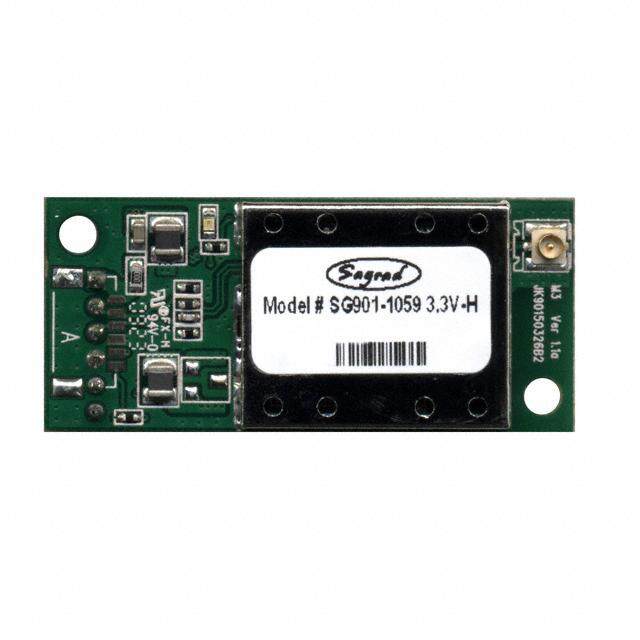

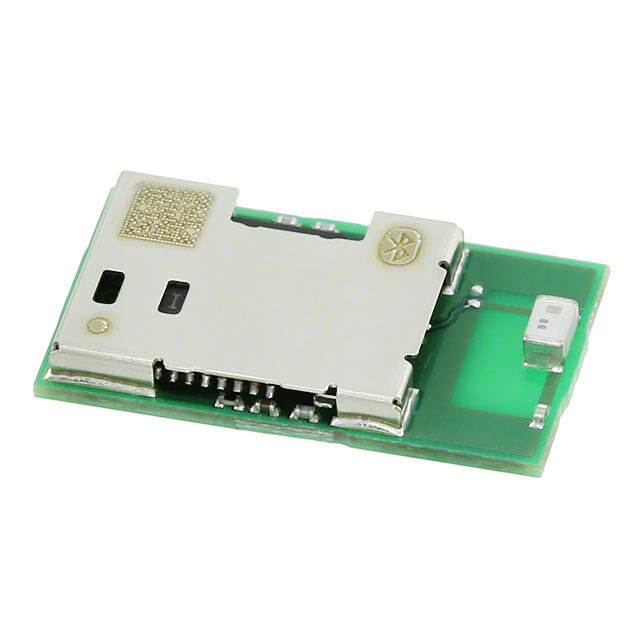
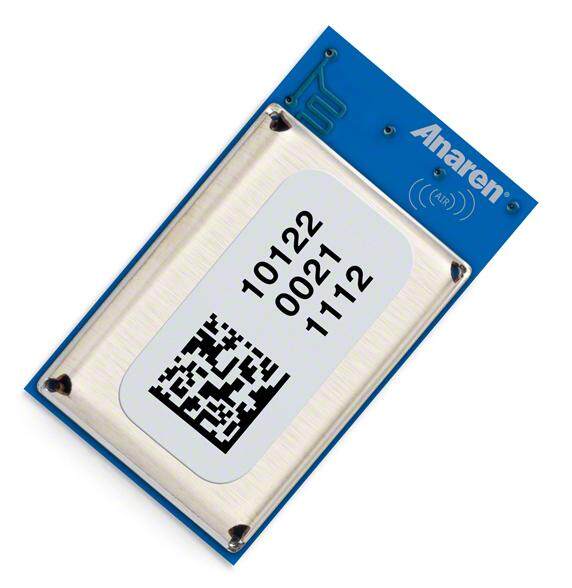


- 商务部:美国ITC正式对集成电路等产品启动337调查
- 曝三星4nm工艺存在良率问题 高通将骁龙8 Gen1或转产台积电
- 太阳诱电将投资9.5亿元在常州建新厂生产MLCC 预计2023年完工
- 英特尔发布欧洲新工厂建设计划 深化IDM 2.0 战略
- 台积电先进制程称霸业界 有大客户加持明年业绩稳了
- 达到5530亿美元!SIA预计今年全球半导体销售额将创下新高
- 英特尔拟将自动驾驶子公司Mobileye上市 估值或超500亿美元
- 三星加码芯片和SET,合并消费电子和移动部门,撤换高东真等 CEO
- 三星电子宣布重大人事变动 还合并消费电子和移动部门
- 海关总署:前11个月进口集成电路产品价值2.52万亿元 增长14.8%
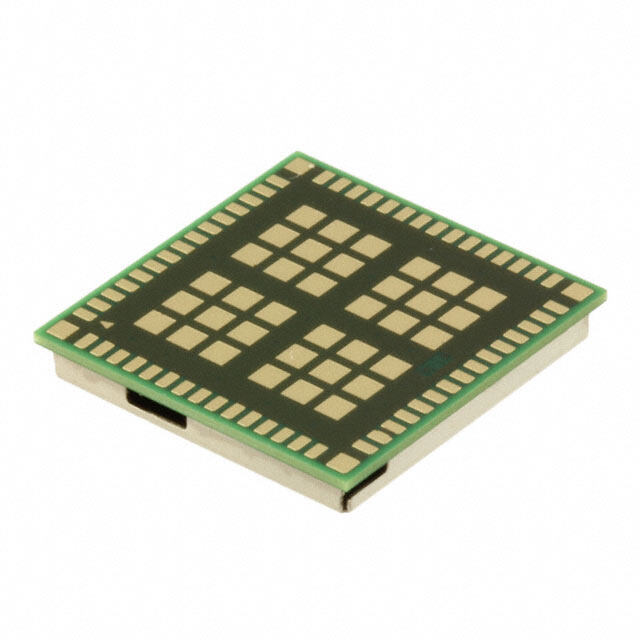
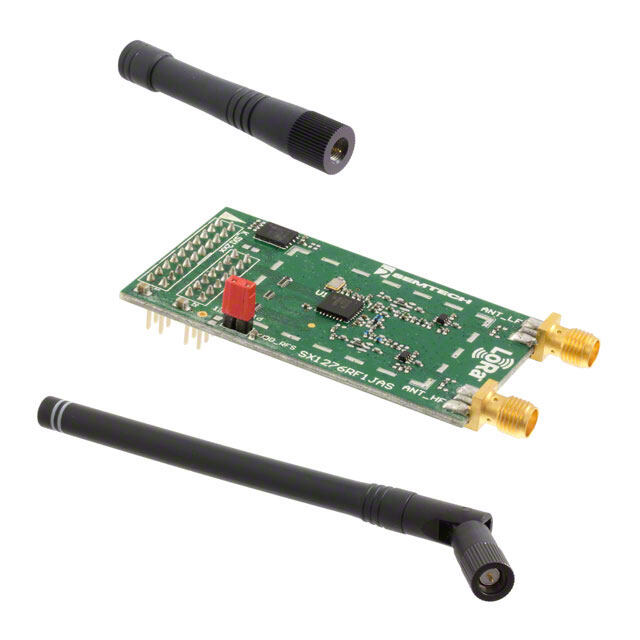

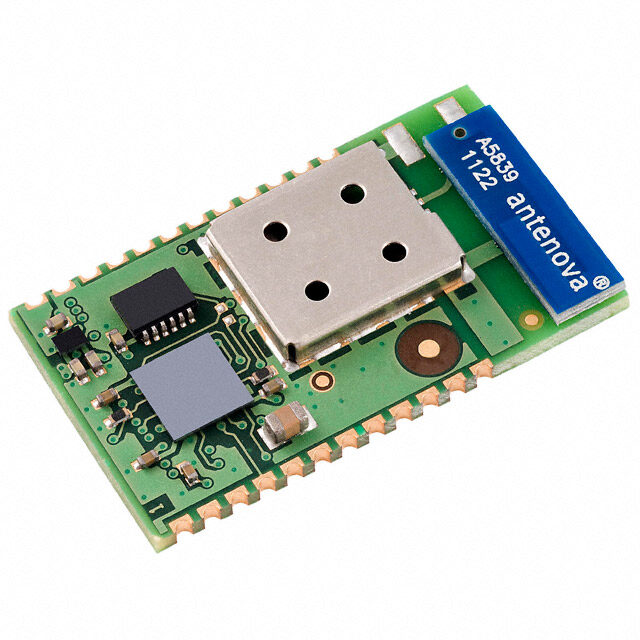

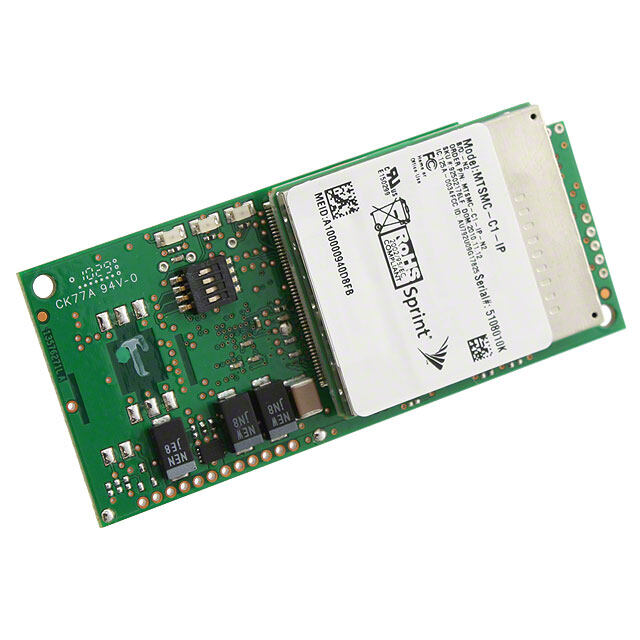
PDF Datasheet 数据手册内容提取
TiWi-R2 TRANSCEIVER MODULE DATASHEET Integrated Transceiver Modules for WLAN 802.11 b/g/n, Bluetooth, and ANT FEATURES DESCRIPTION •IEEE 802.11 b,g,n,d,e,i, compliant The TiWi-R2 module is a high performance 2.4 GHz • Typical WLAN Transmit Power: IEEE 802.11 b/g/n and Bluetooth 2.1+EDR radio in a o 18.3dBm, 11 Mbps, CCK (b) cost effective, pre-certified footprint. o 12.6 dBm, 54 Mbps, OFDM (g) o 9.5 dBm, 65 Mbps, OFDM (n) • Typical WLAN Sensitivity: o -89 dBm, 8% PER, 11 Mbps o -76 dBm, 10% PER, 54 Mbps o -73 dBm, 10% PER, 65 Mbps • Bluetooth 2.1+EDR, Power Class 1.5 • Full support for ANT • Miniature footprint: 18 mm x 13 mm • Low height profile: 1.9 mm The module realizes the necessary PHY/MAC layers • U.FL connector for external antenna to support WLAN applications in conjunction with a • Terminal for PCB/Chip antenna feeds host processor over a SDIO interface. • Integrated band-pass filter The module also provides a Bluetooth platform • Worldwide acceptance: FCC (USA), IC through the HCI transport layer. Both WLAN and (Canada), ETSI (Europe), Giteki (Japan) Bluetooth share the same antenna port. • Modular certification allows reuse of LSR FCC ID and ETSI certification without Need to get to market quickly? Not an expert in repeating the expensive testing on your end 802.11 or Bluetooth? Need a custom antenna? product Would you like to own the design? Would you like • Compact design based on Texas a custom design? Not quite sure what you need? Instruments WL1271 Transceiver Do you need help with your host board? LSR Design • Seamless integration with TI OMAP™ Services will be happy to develop custom hardware application processors or software, integrate the design, or license the • SDIO Host data path interfaces design so you can manufacture yourself. Contact us • Bluetooth Advanced Audio Interfaces at sales@lsr.com or call us at 262-375-4400. • Low power operation mode • RoHS compliant APPLICATIONS • Security • HVAC Control, Smart Energy • Sensor Networks • Medical The information in this document is subject to change without notice. 330-0045-R5.6 Copyright © 2011-2018 LSR Page 1 of 51
TiWi-R2 TRANSCEIVER MODULE DATASHEET ORDERING INFORMATION Order Number Description TiWi-R2 Module with U.FL connector for external antenna 450-0037 (Tray, SPQ = 100) TiWi-R2 Module with U.FL connector for external antenna 450-0037R (Tape and Reel, SPQ = 1000) Table 1 Orderable TiWi-R2 Part Numbers MODULE ACCESSORIES Order Number Description 2.4 GHz Dipole Antenna with Reverse Polarity 001-0001 SMA Connector U.FL to Reverse Polarity SMA Bulkhead Cable 080-0001 105mm Table 2 Module Accessories The information in this document is subject to change without notice. 330-0045-R5.6 Copyright © 2010-2018 LSR Page 2 of 51
TiWi-R2 TRANSCEIVER MODULE DATASHEET BLOCK DIAGRAM TPS73028 TPS62611 VBAT VIO FAST_CLK FEM_CONTROL SLOW_CLK PA_DETECTOR PA_BIAS WLAN WL_TX 2.4 PA GHZ WL_RX RF HOST_SIGNALLING BT_TX_RX BPF HOST_INTERFACE FEM HOST_DEBUG BT MATCHING FM MATCHING WL1271 Figure 1 TiWi-R2 Module Block Diagram – Top-Level The information in this document is subject to change without notice. 330-0045-R5.6 Copyright © 2010-2018 LSR Page 3 of 51
TiWi-R2 TRANSCEIVER MODULE DATASHEET TABLE OF CONTENTS FEATURES ................................................................................................................................... 1 APPLICATIONS ............................................................................................................................ 1 DESCRIPTION .............................................................................................................................. 1 ORDERING INFORMATION .......................................................................................................... 2 MODULE ACCESSORIES ................................................................................................................ 2 BLOCK DIAGRAM ........................................................................................................................ 3 TIWI-R2 MODULE FOOTPRINT AND PIN DEFINITIONS .................................................................. 7 PIN DESCRIPTIONS ...................................................................................................................... 8 BT_FUNC2 and BT_FUNC5 Pins ............................................................................................................................ 10 BT_FUNC4 Pin ...................................................................................................................................................... 10 WL_UART_DBG Pin .............................................................................................................................................. 10 WL_RS232_RX and WL_RS232_TX Pins ................................................................................................................ 10 INI FILE RADIO PARAMETERS AND BLUETOOTH PATCH FILES ..................................................... 11 ELECTRICAL SPECIFICATIONS ..................................................................................................... 12 Absolute Maximum Ratings ................................................................................................................................. 12 Recommended Operating Conditions .................................................................................................................. 12 General Characteristics ........................................................................................................................................ 13 WLAN RF Characteristics ...................................................................................................................................... 15 Bluetooth RF Characteristics ................................................................................................................................ 17 WLAN POWER-UP SEQUENCE .................................................................................................... 18 WLAN POWER-DOWN SEQUENCE .............................................................................................. 19 BLUETOOTH POWER-UP SEQUENCE........................................................................................... 20 BLUETOOTH POWER-DOWN SEQUENCE .................................................................................... 21 ENABLE SCHEME ....................................................................................................................... 22 IRQ OPERATION ........................................................................................................................ 22 SLOW (32 KHZ) CLOCK SOURCE REQUIREMENTS ........................................................................ 23 The information in this document is subject to change without notice. 330-0045-R5.6 Copyright © 2010-2018 LSR Page 4 of 51
TiWi-R2 TRANSCEIVER MODULE DATASHEET BLUETOOTH HCI UART .............................................................................................................. 24 BLUETOOTH AUDIO CODEC INTERFACE...................................................................................... 26 Overview ............................................................................................................................................................. 26 PCM Hardware Interface ..................................................................................................................................... 26 Data Format ......................................................................................................................................................... 26 Frame-Idle Period ................................................................................................................................................ 27 Clock-Edge Operation .......................................................................................................................................... 28 Two Channel PCM Bus Example ........................................................................................................................... 28 Audio Encoding .................................................................................................................................................... 29 Improved Algorithm for Lost Packets ................................................................................................................... 29 BLUETOOTH PCM CLOCK MISMATCH HANDLING ....................................................................... 30 BLUETOOTH INTER-IC SOUND (I2S) ............................................................................................ 31 UDI SUPPORT ............................................................................................................................ 32 SDIO INTERFACE TIMING ........................................................................................................... 33 SDIO CLOCK TIMING .................................................................................................................. 34 SOLDERING RECOMMENDATIONS ............................................................................................. 35 Recommended Reflow Profile for Lead Free Solder ............................................................................................. 35 CLEANING ................................................................................................................................. 36 OPTICAL INSPECTION ................................................................................................................ 36 REWORK ................................................................................................................................... 36 SHIPPING, HANDLING, AND STORAGE ....................................................................................... 36 Shipping ............................................................................................................................................................... 36 Handling .............................................................................................................................................................. 36 Moisture Sensitivity Level (MSL) .......................................................................................................................... 36 Storage ................................................................................................................................................................ 36 Repeating Reflow Soldering ................................................................................................................................. 37 AGENCY CERTIFICATIONS .......................................................................................................... 38 AGENCY STATEMENTS ............................................................................................................... 38 Federal Communication Commission Interference Statement ............................................................................. 38 The information in this document is subject to change without notice. 330-0045-R5.6 Copyright © 2010-2018 LSR Page 5 of 51
TiWi-R2 TRANSCEIVER MODULE DATASHEET Industry Canada Statements ................................................................................................................................ 39 OEM RESPONSIBILITIES TO COMPLY WITH FCC AND INDUSTRY CANADA REGULATIONS ............. 40 OEM LABELING REQUIREMENTS FOR END-PRODUCT ................................................................. 41 OEM END PRODUCT USER MANUAL STATEMENTS ..................................................................... 42 EUROPE .................................................................................................................................... 43 CE Notice ............................................................................................................................................................. 43 Declaration of Conformity (DOC) ......................................................................................................................... 43 MECHANICAL DATA ................................................................................................................... 44 TAPE AND REEL SPECIFICATION ................................................................................................. 46 DEVICE MARKINGS .................................................................................................................... 47 CONTACTING LSR ...................................................................................................................... 51 The information in this document is subject to change without notice. 330-0045-R5.6 Copyright © 2010-2018 LSR Page 6 of 51
TiWi-R2 TRANSCEIVER MODULE DATASHEET TIWI-R2 MODULE FOOTPRINT AND PIN DEFINITIONS To apply the TiWi-R2 module, it is important to use the module pins in your application as they are designated in below and in the corresponding pin definition table found on pages 8 and 9. Not all the pins on the TiWi-R2 module may be used, as some are reserved for future functionality. Figure 2 TiWi-R2 Pinout (Top View) The information in this document is subject to change without notice. 330-0045-R5.6 Copyright © 2010-2018 LSR Page 7 of 51
TiWi-R2 TRANSCEIVER MODULE DATASHEET PIN DESCRIPTIONS Module I/O Buffer Logic Name Description Pin Type Type Level 1 VBAT PI - - Battery Voltage 3.6 VDC Nominal (3.0-4.8 VDC) 2 BT_FUNC5 DO 4 mA 1.8 VDC HOST_WU (*) 3 WL_UART_DBG DIO 4 mA 1.8 VDC WL_UART_DBG 4 WLAN_IRQ DO 4 mA 1.8 VDC WLAN Interrupt Request 5 BT_EN DI - 1.8 VDC Bluetooth Enable 6 FM_EN DI - 1.8 VDC NOT SUPPORTED, CONNECT TO GND 7 WL_RS232_RX DI - 1.8 VDC WLAN TEST UART RX (*) 8 WL_RS232_TX DO 4 mA 1.8 VDC WLAN TEST UART TX (*) 9 FM_I2S_FSYNC DO 4 mA 1.8 VDC NOT SUPPORTED, NO CONNECT 10 WL_EN DI - 1.8 VDC WLAN Enable 11 VIO PI - - POWER SUPPLY FOR 1.8 VDC DIGITAL DOMAIN 12 GND GND - - Ground 13 SDIO_D3 DIO 8 mA 1.8 VDC SDIO INTERFACE, HOST PULL UP 14 SDIO_D2 DIO 8 mA 1.8 VDC SDIO INTERFACE, HOST PULL UP 15 SDIO_D1 DIO 8 mA 1.8 VDC SDIO INTERFACE, HOST PULL UP 16 SDIO_D0 DIO 8 mA 1.8 VDC SDIO INTERFACE, HOST PULL UP 17 SDIO_CMD DIO 8 mA 1.8 VDC HOST PULL UP 18 SDIO_CLK DI - 1.8 VDC HOST PULL UP 19 SLOW_CLK DI - 1.8 VDC SLEEP CLOCK (32 kHz) 20 FM_IRQ DO 4 mA 1.8 VDC NOT SUPPORTED, NO CONNECT 21 FM_SDA DO 4 mA 1.8 VDC NOT SUPPORTED, NO CONNECT 22 FM_SCL DO 4 mA 1.8 VDC NOT SUPPORTED, NO CONNECT 23 FM_I2S_CLK DO 4 mA 1.8 VDC NOT SUPPORTED, NO CONNECT 24 FM_I2S_DI DI 4 mA 1.8 VDC NOT SUPPORTED, CONNECT TO GND 25 FM_I2S_DO DO 4 mA 1.8 VDC NOT SUPPORTED, NO CONNECT 26 FM_AUD_RIN AI - - NOT SUPPORTED, CONNECT TO GND 27 FM_AUD_LIN AI - - NOT SUPPORTED, CONNECT TO GND 28 FMRFOUT AO - - NOT SUPPORTED, NO CONNECT 29 FMRFIN AI - - NOT SUPPORTED, CONNECT TO GND 30 GND GND - - Ground The information in this document is subject to change without notice. 330-0045-R5.6 Copyright © 2010-2018 LSR Page 8 of 51
TiWi-R2 TRANSCEIVER MODULE DATASHEET Module I/O Buffer Logic Name Description Pin Type Type Level 31 FM_AUD_ROUT AO - - NOT SUPPORTED, NO CONNECT 32 FM_AUD_LOUT AO - - NOT SUPPORTED, NO CONNECT 33 AUD_FSYNC DIO 4 mA 1.8 VDC PCM I/F 34 HCI_RX DI 8 mA 1.8 VDC Bluetooth HCI UART RX (*) 35 HCI_RTS DO 4 mA 1.8 VDC Bluetooth HCI UART RTS (*) 36 HCI_TX DIO 8 mA 1.8 VDC Bluetooth HCI UART TX 37 AUD_CLK DO 4 mA 1.8 VDC PCM I/F (*) 38 AUD_OUT DO 4 mA 1.8 VDC PCM I/F (*) 39 HCI_CTS DI 4 mA 1.8 VDC Bluetooth HCI UART CTS (*) 40 AUD_IN DI 4 mA 1.8 VDC PCM I/F (*) 41 BT_FUNC2 DI 4 mA 1.8 VDC Bluetooth Wakeup[DI] / DC2DC mode[DO](*) 42 BT_FUNC4 DO 4 mA 1.8 VDC BT_UARTD (DEBUG) (*) 43 VDD_LDO_CLASS_1P5 NC - - VBAT VOLTAGE PRESENT, NO CONNECT 44 GND GND - - Ground 45 GND GND - - Ground 46 GND GND - - Ground 47 GND GND - - Ground 48 ANT RF - Antenna terminal for WLAN and Bluetooth (Note [1]) 49 GND GND - - Ground 50 GND GND - - Ground 51 GND GND - - Ground 52 GND GND - - Ground PI = Power Input PO = Power Output DI = Digital Input (1.8 VDC Logic Level) DO=Digital Output (1.8 VDC Logic Level) AI = Analog Input AO = Analog Output AIO = Analog Input/Output RF = RF Port GND = Ground Note[1]: Antenna terminal presents d.c. short circuit to ground. (*) indicates that pin is capable of bidirectional operation, but is used as the type shown. Table 3 TiWi-R2 Module Pin Descriptions All digital I/O signals use 1.8V logic. If the host microcontroller does not support 1.8V logic, then level shifters MUST be used. The information in this document is subject to change without notice. 330-0045-R5.6 Copyright © 2010-2018 LSR Page 9 of 51
TiWi-R2 TRANSCEIVER MODULE DATASHEET BT_FUNC2 and BT_FUNC5 Pins When BT is awake and active, BT_WU (BT_FUNC2) is high (from host to module). This is an active high signal. The host puts the BT section to sleep by de-asserting (logic low level) the BT_WU signal (input to the module). The module then drives HOST_WU (BT_FUNC5) low to acknowledge to the host that it is has been put into sleep mode. Using these pins is optional. BT_FUNC4 Pin The BT_FUNC4 (BT_UARTD) pin is a debug pin. It is a 1.8V logic UART TX line. This pin should never need to be used in normal operation. It may be useful to terminate this pin to a test point or header in case it is needed. WL_UART_DBG Pin The WL_UART_DBG pin is a debug pin. It is a 1.8V logic UART TX line. This pin should never need to be used in normal operation. It may be useful to terminate this pin to a test point or header in case it is needed. WL_RS232_RX and WL_RS232_TX Pins These pins are used for a WLAN test mode interface. Both pins are 1.8V logic level UART pins. These pins should be brought out to a header on the host PCB. The WLAN test interface can be used to place the module into constant packet transmit and constant packet receive modes. These modes can be useful for antenna and sensitivity testing. The information in this document is subject to change without notice. 330-0045-R5.6 Copyright © 2010-2018 LSR Page 10 of 51
TiWi-R2 TRANSCEIVER MODULE DATASHEET INI FILE RADIO PARAMETERS AND BLUETOOTH PATCH FILES There are ini files that contains WLAN radio parameters which are critical to both the RF performance and EMC compliance of the module in various antenna configurations. The ini files available on the LSR wiki website are only intended to be used with the LSR WLAN Eval Tool. Note that the ini file will not work when using the TiWi-R2 module in normal operation which typically involves an operating system. To use the TiWi-R2 module in normal operation, refer to specifics contained in the TiWi Family INI File Radio Parameter User Guide which is also available for download on the LSR wiki website, http://wiki.lsr.com/ . The settings specified in the appropriate ini file must be used to operate the module in compliance with the modular certification for FCC or ETSI. There are two ini files for operating the module in compliance with FCC regulations that corresponds to different antenna configuration, and a different ini file for operating the module in compliance with the ETSI regulations. The Bluetooth patch files are available on the LSR wiki website. The appropriate patch file must be selected to operate the module in compliance with the modular certification for FCC or ETSI. The information in this document is subject to change without notice. 330-0045-R5.6 Copyright © 2010-2018 LSR Page 11 of 51
TiWi-R2 TRANSCEIVER MODULE DATASHEET ELECTRICAL SPECIFICATIONS The majority of these characteristics are based on controlling and conditioning the tests using the TiWi-R2 control software application. Other control conditions may require these values to be re-characterized by the customer. Absolute Maximum Ratings Parameter Min Max Unit Power supply voltage (VBAT)(4)(5) -0.5 +5.5 V Digital supply voltage (VIO) -0.5 2.1 V Voltage on any GPIO -0.5 VIO + 0.5 V Voltage on any Analog Pins(3) -0.5 2.1 V RF input power, antenna port +10 dBm Operating temperature(6) -40 +85 ºC Storage temperature -55 +125 ºC 1. Stresses beyond those listed under “absolute maximum ratings” may cause permanent damage to the device and are not covered by the warranty. These are stress ratings only and functional operation of the device at these or any other conditions beyond those indicated under “recommended operating conditions” is not implied. Exposure to absolute-maximum-rated conditions for extended periods may affect device reliability. 2. All parameters are measured as follows unless stated otherwise: VDD_IN=1.8V, VDDIO_1.8V=1.8V, VDD_LDO_CLASS1P5=3.6V 3. Analog pins: XTALP, XTALM, RFIOBT, DRPWRXBM, DRPWRXBP, DRPWTXB, and also FMRFINP, FMRFINM, FMRFINM, FMAUDLIN, FMAUDRIN, FMAUDLOUT, FMAUDROUT 4. The following signals are from the VBAT group, PMS_VBAT and VDD_LDO_CLASS1P5 (if BT class 1.5 direct VBAT is used). 5. Maximum allowed depends on accumulated time at that voltage; 4.8V for 7 years lifetime, 5.5V for 6 hours cumulative. 6. The device can be reliably operated for 5,000 active-WLAN cumulative hours at TA of 85oC. Table 4 Absolute Maximum Ratings Recommended Operating Conditions Parameter Min Typ Max Unit V 3.0 3.6 4.8 V BAT VIO 1.62 1.8 1.92 V V 0.65 x VIO - VIO V IH V 0 - 0.35 x VIO V IL V @ 4, 8 mA VIO - 0.45 - VIO V OH V @ 4, 8 mA 0 - 0.45 V OL Ambient temperature range -40 25 85 ºC Table 5 Recommended Operating Conditions The information in this document is subject to change without notice. 330-0045-R5.6 Copyright © 2010-2018 LSR Page 12 of 51
TiWi-R2 TRANSCEIVER MODULE DATASHEET General Characteristics Parameter Min Typ Max Unit WLAN RF frequency range 2412 2472 MHz 802.11 b/g/n WLAN RF data rate 1 rates 65 Mbps supported BT RF frequency Range 2402 2480 MHz Table 6 General Characteristics Power Consumption - WLAN Parameter Test Conditions Min Typ Max Unit 2437 MHz, V =3.6V, T =+25°C BAT amb CCK (802.11b) Po=18.3 dBm, 11 Mbps CCK - 270 - mA TX Current L=1200 bytes, t (idle)=4 S delay 2437 MHz, V =3.6V, T =+25°C BAT amb OFDM (802.11g) Po=12.6 dBm, 54 Mbps OFDM - 171 - mA TX Current L=1200 bytes, t (idle)=4 S delay 2437 MHz, V =3.6V, T =+25°C BAT amb OFDM (802.11n) Po=9.5 dBm, 65 Mbps OFDM - 152 - mA TX Current L=1200 bytes, t (idle)=4 S delay CCK (802.11b) - 100 - mA RX Current OFDM (802.11g) - 100 - mA RX Current OFDM (802.11n) - 100 - mA RX Current Dynamic Mode [1] - <1.2 - mA [1] Total Current from V for reception of Beacons with DTIM=1 TBTT=100 mS, Beacon duration 1.6ms, 1 Mbps beacon reception in BAT Listen Mode. Table 7 WLAN Power Consumption The information in this document is subject to change without notice. 330-0045-R5.6 Copyright © 2010-2018 LSR Page 13 of 51
TiWi-R2 TRANSCEIVER MODULE DATASHEET Power Consumption - Bluetooth Parameter Test Conditions Min Typ Max Unit GFSK TX Current Constant Transmit, DH5, PRBS9 - 45 - mA EDR TX Current Constant Transmit, 2DH5,3DH5, PRBS9 - 43 - mA GFSK RX Current Constant Receive, DH1 - 35 - mA EDR RX Current Constant Receive, 2DH5, 3DH5 - 41 - mA Deep Sleep Current Deep Sleep Mode - 70 - µA Table 8 Bluetooth Power Consumption DC Characteristics – General Purpose I/O Parameter Test Conditions Min Typ Max Unit VIO Current - 16 mA Logic input low, V 0 - 0.35 x VIO V IL Logic input high, V 0.65 x VIO - VIO V IH Iout = 8 mA 0 - 0.45 V Logic output low, V OL (Full Drive) Iout = 4 mA 0 - 0.45 V Iout = 1 mA 0 - 0.112 V Logic output low, V OL (Reduced Drive) Iout = 0.09 mA 0 - 0.01 V Iout = -8 mA VIO - 0.45 - VIO V Logic output high, V OH (Full Drive) Iout = -4 mA VIO - 0.45 - VIO V Iout = -1 mA VIO - 0.112 - VIO V Logic output high, V OH (Reduced Drive) Iout = -0.3 mA VIO - 0.033 - VIO V Table 9 DC Characteristics General Purpose I/O The information in this document is subject to change without notice. 330-0045-R5.6 Copyright © 2010-2018 LSR Page 14 of 51
TiWi-R2 TRANSCEIVER MODULE DATASHEET WLAN RF Characteristics WLAN Transmitter Characteristics (TA=25°C, VBAT=3.6 V) Parameter Test Conditions Min Typ Max Unit 11 Mbps CCK , 802.11(b) Mask Compliance, 11 Mbps CCK (802.11b) 35% EVM - 18.3 - dBm TX Output Power RMS power over TX packet 9 Mbps OFDM , 802.11(g) Mask 9 Mbps OFDM (802.11g) TX Compliance, -8 dB EVM - 17.6 - dBm Output Power RMS power over TX packet 54 Mbps OFDM, 802.11(g) Mask 54 Mbps OFDM (802.11g) TX Compliance, -25 dB EVM - 12.6 - dBm Output Power RMS power over TX packet 6.5 Mbps OFDM, 802.11(n) Mask 6.5 Mbps OFDM (802.11n) TX Compliance, -5 dB EVM - 17.7 - dBm Output Power RMS power over TX packet 65 Mbps OFDM, 802.11(n) Mask 65 Mbps OFDM (802.11n) TX Compliance, -28 dB EVM - 9.5 - dBm Output Power RMS power over TX packet Table 10 WLAN Transmitter RF Characteristics The information in this document is subject to change without notice. 330-0045-R5.6 Copyright © 2010-2018 LSR Page 15 of 51
TiWi-R2 TRANSCEIVER MODULE DATASHEET WLAN Receiver Characteristics (TA=25°C, VBAT=3.6 V) [1] Parameter Test Conditions Min Typ Max Unit 1 Mbps CCK (802.11b) 8% PER - -97 - dBm RX Sensitivity 11 Mbps CCK (802.11b) 8% PER - -89 - dBm RX Sensitivity 9 Mbps OFDM (802.11g) 10% PER - -90 - dBm RX Sensitivity 54 Mbps OFDM (802.11g) RX 10% PER - -76 - dBm Sensitivity 6.5 Mbps OFDM (802.11n) RX 10% PER - -91 - dBm Sensitivity 65 Mbps OFDM (802.11n) RX 10% PER - -73 -- dBm Sensitivity 11 Mbps CCK (802.11b) 8% PER - - -10 dBm RX Overload Level 6 Mbps OFDM (802.11g) 10% PER - - -20 dBm RX Overload Level 54 Mbps OFDM (802.11g) 10% PER - - -20 dBm RX Overload Level 65 Mbps OFDM (802.11n) 10% PER - - -20 dBm RX Overload Level [1] Up to 2 dB degradation at Channel 13 for 11g/n modes and up to 2 dB degradation at Channel 14 for 11b/g/n modes. Table 11 WLAN Receiver RF Characteristics The information in this document is subject to change without notice. 330-0045-R5.6 Copyright © 2010-2018 LSR Page 16 of 51
TiWi-R2 TRANSCEIVER MODULE DATASHEET Bluetooth RF Characteristics Bluetooth Transmitter GFSK and EDR Characteristics, Class 1.5 (TA=25°C, VBAT=3.6 V) Test Parameter Min Typ Max Bluetooth Spec Unit Conditions GFSK RF Output Power - 9.5 - - dBm EDR RF Output Power - 7 - dBm Power Control Step Size 2 4 8 2-8 dB EDR Relative Power -2 1 -4/+1 dB Table 12 Bluetooth Transmitter RF Characteristics Bluetooth Receiver Characteristics (TA=25°C, VBAT=3.6 V) Test Parameter Min Typ Max Bluetooth Spec Unit Conditions GFSK Sensitivity BER=0.1% - -92 - -70 dBm EDR 2 Mbps Sensitivity BER=0.01% - -91 - -70 dBm EDR 3 Mbps Sensitivity BER=0.01% - -82 - -70 dBm GFSK Maximum Input Level BER=0.1% - -5 - -20 dBm EDR 2 Maximum Input Level BER=0.1% - -10 - - dBm EDR 3 Maximum Input Level BER=0.1% - -10 - - - Table 13 Bluetooth Receiver RF Characteristics The information in this document is subject to change without notice. 330-0045-R5.6 Copyright © 2010-2018 LSR Page 17 of 51
TiWi-R2 TRANSCEIVER MODULE DATASHEET WLAN POWER-UP SEQUENCE The following sequence describes device power-up from shutdown. Only the WLAN Core is enabled; the Bluetooth and FM cores are disabled. Figure 3 TiWi-R2 Power-up Sequence Requirements 1. No signals are allowed on the IO pins if no IO power is supplied, because the IOs are not 'fail safe’. Exceptions are CLK_REQ_OUT, SLOWCLK, XTALP, and AUD_xxx, which are failsafe and can tolerate external voltages with no VDDS and DC2DC". 2. VBAT, VIO, and SLOWCLK must be available before WL_EN. 3. Twakeup = T1 + T2 The duration of T1 is defined as the time from WL_EN=high until F is valid for the SoC. T1=~55ms REF The duration of T2 depends on: – Operating system – Host enumeration for the SDIO/WSPI – PLL configuration – Firmware download – Releasing the core from reset – Firmware initialization The information in this document is subject to change without notice. 330-0045-R5.6 Copyright © 2010-2018 LSR Page 18 of 51
TiWi-R2 TRANSCEIVER MODULE DATASHEET WLAN POWER-DOWN SEQUENCE Notes: 1. The DC2DC(1.8V) signal can be monitored on BT_FUNC2 Module Pin (#41) 2. DC_REQ and CLK_REQ are internal signals shown for reference only Figure 4 TiWi-R2 Module Power-down Sequence Requirements 1. DC_REQ will go low only if WLAN is the only core working. Otherwise if another core is working (e.g BT) it will stay high. 2. CLK_REQ will go low only if WLAN is the only core working. Otherwise if another core is working and using the F (e.g BT) it will stay high. REF 3. If WLAN is the only core that is operating, WL_EN must remain de-asserted for at least 64 sec before it is re- asserted. The information in this document is subject to change without notice. 330-0045-R5.6 Copyright © 2010-2018 LSR Page 19 of 51
TiWi-R2 TRANSCEIVER MODULE DATASHEET BLUETOOTH POWER-UP SEQUENCE The following sequence describes device power up from shutdown. Only the Bluetooth core is enabled; the WLAN core is disabled. Notes: 1. (A) After this sequence is completed, the device is in the low VIO-leakage state while in shutdown 2. The DC2DC(1.8V) signal can be monitored on BT_FUNC2 Module Pin (#41) 3. DC_REQ, CLK_REQ, and FREF are internal signals shown for reference only Figure 5 Bluetooth Power-up Sequence Power up requirements: 1. No signals are allowed on the IO pins if no IO power supplied, because the IOs are not 'failsafe'. Exceptions are CLK_REQ_OUT, SLOWCLK, XTALP, and AUD_xxx, which are failsafe and can tolerate external voltages with no VDDS and DC2DC. 2. VDDS and SLOWCLK must be stable before releasing BT_EN. 3. Fast clock must be stable maximum 55 ms after BT_EN goes HIGH. The information in this document is subject to change without notice. 330-0045-R5.6 Copyright © 2010-2018 LSR Page 20 of 51
TiWi-R2 TRANSCEIVER MODULE DATASHEET BLUETOOTH POWER-DOWN SEQUENCE Notes: 1. The DC2DC(1.8V) signal can be monitored on BT_FUNC2 Module Pin (#41) 2. DC_REQ and CLK_REQ are internal signals shown for reference only Figure 6 Bluetooth Power-down Sequence The TiWi-R2 module indicates completion of Bluetooth power up sequence by asserting HCI_RTS low. This occurs up to 100 ms after BT_EN goes high. The information in this document is subject to change without notice. 330-0045-R5.6 Copyright © 2010-2018 LSR Page 21 of 51
TiWi-R2 TRANSCEIVER MODULE DATASHEET ENABLE SCHEME The module has 3 enable pins, one for each core: WL_EN, and BT_EN and FM_EN. Presently, there are 2 modes of active operation now supported: WLAN and Bluetooth. It is recommended that the FM_EN pin be grounded to disable the FM section. It is also recommended that the FM section be disabled by Bluetooth HCI commands. 1. Each core is operated independently by asserting each signal EN to Logic '1’. In this mode it is possible to control each core asynchronously and independently. 2. Bluetooth mode operation. WLAN will be operated through WL_EN asynchronously and independently of Bluetooth. IRQ OPERATION 1. The default state of the WLAN_IRQ prior to firmware initialization is 0. 2. During firmware initialization, the WLAN_IRQ is configured by the SDIO module; a WLAN_IRQ changes its state to 1. 3. A WLAN firmware interrupt is handled as follows: a. The WLAN firmware creates an Interrupt-to-Host, indicated by a 1-to-0 transition on the WLAN_IRQ line (host must be configured as active-low or falling-edge detect). b. After the host is available, depending on the interrupt priority and other host tasks, it masks the firmware interrupt. The WLAN_IRQ line returns to 1 (0-to-1 transition on the WLAN_IRQ line). c. The host reads the internal register status to determine the interrupt sources - the register is cleared after the read. d. The host processes in sequence all the interrupts read from this register e. The host unmasks the firmware interrupts. 4. The host is ready to receive another interrupt from the WLAN device. The information in this document is subject to change without notice. 330-0045-R5.6 Copyright © 2010-2018 LSR Page 22 of 51
TiWi-R2 TRANSCEIVER MODULE DATASHEET SLOW (32 KHZ) CLOCK SOURCE REQUIREMENTS The slow clock is always supplied from an external source. It is input on the SLOW_CLK pin, and can be a digital signal in the range of VIO only. For slow clock frequency and accuracy refer to Table 14. The external slow clock must be stable before the system exits from shut down mode. Parameter [1] Condition Symbol Min Typ Max Unit Input slow clock frequency 32768 Hz Input slow clock accuracy WLAN, BT +/-250 ppm Input transition time T/T – 10% to 90% T/T 100 ns r f r f Frequency input duty cycle 30 50 70 % VIH 0.65 x VIO VIO Square wave, Input voltage limits V peak DC coupled VIL 0 0.35 x VIO Input impedance 1 MΩ Input capacitance 5 pF Rise and fall time 100 ns Phase noise 1 kHz -125 dBc/Hz Table 14 Slow Clock Source Requirements [1] Slow clock is a fail safe input The information in this document is subject to change without notice. 330-0045-R5.6 Copyright © 2010-2018 LSR Page 23 of 51
TiWi-R2 TRANSCEIVER MODULE DATASHEET BLUETOOTH HCI UART Figure 7 Bluetooth UART Timing Table 15 Bluetooth UART Timing The information in this document is subject to change without notice. 330-0045-R5.6 Copyright © 2010-2018 LSR Page 24 of 51
TiWi-R2 TRANSCEIVER MODULE DATASHEET Figure 8 Bluetooth UART Data Frame Table 16 Bluetooth UART Data Frame The information in this document is subject to change without notice. 330-0045-R5.6 Copyright © 2010-2018 LSR Page 25 of 51
TiWi-R2 TRANSCEIVER MODULE DATASHEET BLUETOOTH AUDIO CODEC INTERFACE Overview The CODEC interface is a fully dedicated programmable serial port that provides the logic to interface to several kinds of PCM or I2S codecs. The interface supports: • Two voice channels • Master / slave modes • Coding schemes: μ-Law, A-Law, Linear, Transparent • Long & short frames • Different data sizes, order and positions • UDI profile • High rate PCM interface for EDR • Enlarged interface options to support a wider variety of Codecs • PCM bus sharing PCM Hardware Interface The PCM interface is one implementation of the codec interface. It contains the following four lines: • Clock--configurable direction (input or output) • Frame Sync--configurable direction (input or output) • Data In--Input • Data Out--Output/Hi-Z The WL1271 device can be either the master of the interface where it generates the clock and the framesync signals, or slave where it receives these two signals. The PCM interface is fully configured by means of a VS command. For slave mode, clock input frequencies of up to 16MHz are supported. At clock rates above 12MHz, the maximum data burst size is 32 bits. For master mode, the WL1271 can generate any clock frequency between 64kHz and 4.096MHz. Data Format The data format is fully configurable: • The data length can be from 8 to 320 bits, in 1-bit increments, when working with two channels, or up to 640 bits when using 1 channel. The data length can be set independently for each channel. • The data position within a frame is also configurable with 1-clock (bit) resolution, and can be set independently (relative to the edge of the Frame Sync signal) for each channel. • The Data_In and Data_Out bit order can be configured independently. For example; Data_In can start with MSB while Data_Out starts with LSB. Each channel is separately configurable. The inverse bit order (i.e. LSB first) is supported only for sample sizes up to 24 bits. • The data in and data out size do not necessarily have to be the same length. • The Data_Out line is configured as a ‘high-Z’ output between data words. Data_Out can also be set for permanent high-Z, irrespective of data out. This allows the WL1271 to be a bus slave in a multi-slave PCM environment. At power up, Data_Out is configured as high-Z. The information in this document is subject to change without notice. 330-0045-R5.6 Copyright © 2010-2018 LSR Page 26 of 51
TiWi-R2 TRANSCEIVER MODULE DATASHEET Frame-Idle Period The CODEC interface has the capability for frame-idle periods, where the PCM clock can “take a break” and become ‘0’ at the end of the PCM frame, after all data has been transferred. The WL1271 supports frame-idle periods both as master and slave of the PCM bus. When WL1271 is the master of the interface, the frame-idle period is configurable. There are 2 configurable parameters: • Clk_Idle_Start - Indicates the number of PCM clock cycles from the beginning of the frame till the beginning of the idle period. After Clk_Idle_Start clock cycles, the clock becomes ‘0’. • Clk_Idle_End – Indicates the time from the beginning of the frame till the end of the idle period. This time is given in multiples of PCM clock periods. The delta between Clk_Idle_Start and Clk_Idle_End is the clock idle period. e.g. For PCM clock rate = 1MHz, frame sync period = 10kHz, Clk_Idle_Start = 60, Clk_Idle_End = 90. Between each two-frame sync there are 70 clock cycles (instead of 100). The clock idle period starts 60 clock cycles after the beginning of the frame and lasts 90-60=30 clock cycles. This means that the idle period ends 100-90=10 clock cycles before the end of the frame. The data transmission must end prior to the beginning of the idle period. Figure 9 Frame Idle Period The information in this document is subject to change without notice. 330-0045-R5.6 Copyright © 2010-2018 LSR Page 27 of 51
TiWi-R2 TRANSCEIVER MODULE DATASHEET Clock-Edge Operation The CODEC interface of the WL1271 can work on the rising or the falling edge of the clock. It also has the ability to sample the frame sync and the data at inversed polarity. The following diagram shows the operation of a falling-edge-clock type of codec. The codec is the master of the PCM bus. The frame-sync signal is updated (by the codec) on the falling clock edge and therefore is sampled (by the WL1271) on the next rising clock. The data from the codec is sampled (by the WL1271) on the clock falling edge. Figure 10 Negative Clock Edge PCM Operation Two Channel PCM Bus Example In the following figure, a 2-channel PCM bus is shown where the two channels have different word sizes and arbitrary positions in the bus’ frame. (FT stands for Frame Timer) Figure 11 2 Channels PCM Bus Timing The information in this document is subject to change without notice. 330-0045-R5.6 Copyright © 2010-2018 LSR Page 28 of 51
TiWi-R2 TRANSCEIVER MODULE DATASHEET Audio Encoding The WL1271 CODEC interface can use one of four audio coding patterns: • A-Law (8-bit) • μ-Law (8-bit) • Linear (8 or 16-bit) • Transparent Improved Algorithm for Lost Packets The WL1271 features an improved algorithm for improving voice quality when received voice data packets go missing. There are two options: • Repeat the last sample – possible only for sample sizes up to 24 bits. For sample sizes >24 bits, the last byte is repeated. • Repeat a configurable sample of 8-24 bits (depends on the real sample size), in order to simulate silence (or anything else) in the PCM bus. The configured sample is written in a specific register for each channel. The choice between those two options is configurable separately for each channel. The information in this document is subject to change without notice. 330-0045-R5.6 Copyright © 2010-2018 LSR Page 29 of 51
TiWi-R2 TRANSCEIVER MODULE DATASHEET BLUETOOTH PCM CLOCK MISMATCH HANDLING In BT RX, the WL1271 receives RF voice packets and writes these to the CODEC I/F. If the WL1271 receives data faster than the CODEC I/F output allows, an overflow occurs. In this case, the WL1271 BT function has 2 possible behavior modes: ‘allow overflow’ and ‘don’t allow overflow’. • If overflow is allowed, the WL1271 BT function continues receiving data and overwrites any data not yet sent to the CODEC. • If overflow is not allowed, RF voice packets received when buffer is full, are discarded The information in this document is subject to change without notice. 330-0045-R5.6 Copyright © 2010-2018 LSR Page 30 of 51
TiWi-R2 TRANSCEIVER MODULE DATASHEET BLUETOOTH INTER-IC SOUND (I2S) The WL1271 can be configured as an Inter-IC Sound (I2S) serial interface to an I2S CODEC device. In this mode, the WL1271 audio CODEC interface is configured as a bi-directional, full duplex interface, with two time slots per frame: Time slot 0 is used for the left channel audio data and time slot 1 for the right channel audio data. Each time slot is configurable up to 40 serial clock cycles in length and the frame is configurable up to 80 serial clock cycles in length. The information in this document is subject to change without notice. 330-0045-R5.6 Copyright © 2010-2018 LSR Page 31 of 51
TiWi-R2 TRANSCEIVER MODULE DATASHEET UDI SUPPORT The UDI profile defines the protocols and procedures that are used by devices implementing UDI for the 3G mobile phone systems, such as devices with Bluetooth connections to a 3G Handset, communicating via video phone over a 3G network. Up to 2 channels of UDI data can be supported. The data is transferred via the CODEC interface using transparent mode, and is sent out using eSCO EV4 Bluetooth packets (EV5 is also selectable). The information in this document is subject to change without notice. 330-0045-R5.6 Copyright © 2010-2018 LSR Page 32 of 51
TiWi-R2 TRANSCEIVER MODULE DATASHEET SDIO INTERFACE TIMING Table 17 SDIO Interface Read (see Figure 12) Figure 12 SDIO Single Block Read Table 18 SDIO Interface Write (see Figure 13) Figure 13 SDIO Single Block Write The information in this document is subject to change without notice. 330-0045-R5.6 Copyright © 2010-2018 LSR Page 33 of 51
TiWi-R2 TRANSCEIVER MODULE DATASHEET SDIO CLOCK TIMING Table 19 SDIO Clock Timing Figure 14 SDIO Clock Timing The information in this document is subject to change without notice. 330-0045-R5.6 Copyright © 2010-2018 LSR Page 34 of 51
TiWi-R2 TRANSCEIVER MODULE DATASHEET SOLDERING RECOMMENDATIONS Recommended Reflow Profile for Lead Free Solder Note: The quality of solder joints on the castellations (‘half vias’) where they contact the host board should meet the appropriate IPC Specification. See IPC-A-610-D Acceptability of Electronic Assemblies, section 8.2.4 Castellated Terminations.” Figure 15 Reflow Profile The information in this document is subject to change without notice. 330-0045-R5.6 Copyright © 2010-2018 LSR Page 35 of 51
TiWi-R2 TRANSCEIVER MODULE DATASHEET CLEANING SHIPPING, HANDLING, AND STORAGE In general, cleaning populated modules is strongly Shipping discouraged. Residuals under the module cannot be easily removed with any cleaning process. TiWi-R2 modules are delivered in trays of 100 or reels of 1,000. • Cleaning with water can lead to capillary effects where water is absorbed into the gap between Handling the host board and the module. The combination of soldering flux residuals and The TiWi-R2 modules contain a highly sensitive encapsulated water could lead to short circuits electronic circuitry. Handling without proper ESD between neighboring pads. Water could also protection may damage the module permanently. damage any stickers or labels. • Cleaning with alcohol or a similar organic Moisture Sensitivity Level (MSL) solvent will likely flood soldering flux residuals into the RF shield, which is not accessible for Per J-STD-020, devices rated as MSL 4 and not post-washing inspection. The solvent could also stored in a sealed bag with desiccant pack should be damage any stickers or labels. baked prior to use. • Ultrasonic cleaning could damage the module permanently. Devices are packaged in a Moisture Barrier Bag with a desiccant pack and Humidity Indicator Card (HIC). OPTICAL INSPECTION Devices that will be subjected to reflow should reference the HIC and J-STD-033 to determine if After soldering the Module to the host board, baking is required. consider optical inspection to check the following: If baking is required, refer to J-STD-033 for bake • Proper alignment and centering of the module procedure. over the pads. • Proper solder joints on all pads. Storage • Excessive solder or contacts to neighboring pads or vias. Per J-STD-033, the shelf life of devices in a Moisture Barrier Bag is 12 months at <40ºC and <90% room REWORK humidity (RH). The module can be unsoldered from the host board Do not store in salty air or in an environment with a if the Moisture Sensitivity Level (MSL) requirements high concentration of corrosive gas, such as Cl2, are met as described in this datasheet. H2S, NH3, SO2, or NOX. Do not store in direct sunlight. Never attempt rework on the module The product should not be subject to excessive itself, e.g., replacing individual mechanical shock. components. Such actions will terminate warranty coverage. The information in this document is subject to change without notice. 330-0045-R5.6 Copyright © 2010-2018 LSR Page 36 of 51
TiWi-R2 TRANSCEIVER MODULE DATASHEET Repeating Reflow Soldering Only a single reflow soldering process is recommended for host boards. The information in this document is subject to change without notice. 330-0045-R5.6 Copyright © 2010-2018 LSR Page 37 of 51
TiWi-R2 TRANSCEIVER MODULE DATASHEET AGENCY CERTIFICATIONS FCC ID: TFB-TIWI1-01, 15.247 IC ID: 5969A-TIWI101, RSS 210 CE: Compliant to standards EN 60950-1, EN 300 328, and EN 301 489 Giteki: 209-J00157 SAR: This wireless mobile and/or portable device has been shown to be compliant for localized specific absorption rate (SAR) for uncontrolled environment/general exposure limits specified in ANSI/IEEE Std. C95.1- 1999 and had been tested in accordance with the measurement procedures specified in IEEE 1528-2003, OET Bulletin 65 Supp. C, RSS-102 and Safety Code 6. AGENCY STATEMENTS Federal Communication Commission Interference Statement This equipment has been tested and found to comply with the limits for a Class B digital device, pursuant to Part 15 of the FCC Rules. These limits are designed to provide reasonable protection against harmful interference in a residential installation. This equipment generates uses and can radiate radio frequency energy and, if not installed and used in accordance with the instructions, may cause harmful interference to radio communications. However, there is no guarantee that interference will not occur in a particular installation. If this equipment does cause harmful interference to radio or television reception, which can be determined by turning the equipment off and on, the user is encouraged to try to correct the interference by one of the following measures: • Reorient or relocate the receiving antenna. • Increase the separation between the equipment and receiver. • Connect the equipment into an outlet on a circuit different from that to which the receiver is connected. • Consult the dealer or an experienced radio/TV technician for help. This device complies with Part 15 of the FCC Rules. Operation is subject to the following two conditions: (1) This device may not cause harmful interference, and (2) this device must accept any interference received, including interference that may cause undesired operation. FCC CAUTION: Any changes or modifications not expressly approved by the party responsible for compliance could void the user's authority to operate this equipment. The information in this document is subject to change without notice. 330-0045-R5.6 Copyright © 2010-2018 LSR Page 38 of 51
TiWi-R2 TRANSCEIVER MODULE DATASHEET Industry Canada Statements Operation is subject to the following two conditions: (1) this device may not cause interference, and (2) this device must accept any interference, including interference that may cause undesired operation of the device. To reduce potential radio interference to other users, the antenna type and its gain should be so chosen that the equivalent isotropically radiated power (e.i.r.p.) is not more than that permitted for successful communication. This device has been designed to operate with the antenna(s) listed below, and having a maximum gain of 4.3 dBi (LSR Dipole), -0.6dBi (Ethertronics Prestta), and 3.0dBi (Taoglas Flexible Dipole). Antennas not included in this list or having a gain greater than 4.3 dBi, -0.6dBi, and 3.0dBi are strictly prohibited for use with this device. The required antenna impedance is 50 ohms. List of all Antennas Acceptable for use with the Transmitter 1) LSR 001-0001 center-fed dipole antenna and LSR 080-0001 U.FL to Reverse Polarity SMA connector cable. 2) Ethertronics Prestta 1000423 and Johnson Emerson U.FL to U.FL coaxial cable 415-0088-150. 3) Taoglas FXP831.07.0100C flexible dipole antenna with integrated cable and U.FL connector. L'opération est soumise aux deux conditions suivantes: (1) cet appareil ne peut pas provoquer d'interférences et (2) cet appareil doit accepter toute interférence, y compris les interférences qui peuvent causer un mauvais fonctionnement de l'appareil. Pour réduire le risque d'interférence aux autres utilisateurs, le type d'antenne et son gain doiventêtre choisis de manière que la puissance isotrope rayonnée équivalente (PIRE) ne dépasse pascelle permise pour une communication réussie. Cet appareil a été conçu pour fonctionner avec l'antenne (s) ci-dessous, et ayant un gain maximum de 4,3 dBi (LSR dipôle),-0.6dBi (Ethertronics Prestta), et 3.0dBi (Taoglas Flexibles Dipôle). Antennes pas inclus dans cette liste ou ayant un gain supérieur à 4,3 dBi, 0.6dBi, et 3.0dBi sont strictement interdits pour une utilisation avec cet appareil. L'impédance d'antenne requise est de 50 ohms. Liste de toutes les antennes acceptables pour une utilisation avec l'émetteur 1) LSR 001-0001 alimenté par le centre antenne dipôle et LSR 080-0001 U.FL d'inversion de polarité du câble connecteur SMA. 2) Ethertronics Prestta 1000423 et Johnson Emerson U.FL d'un câble coaxial U.FL 415-0088-150. 3) Taoglas FXP831.07.0100C antenne dipôle flexible avec câble intégré et un connecteur U.FL. The information in this document is subject to change without notice. 330-0045-R5.6 Copyright © 2010-2018 LSR Page 39 of 51
TiWi-R2 TRANSCEIVER MODULE DATASHEET OEM RESPONSIBILITIES TO COMPLY WITH FCC AND INDUSTRY CANADA REGULATIONS The TiWi-R2 Module has been certified for integration into products only by OEM integrators under the following conditions: This device is granted for use in Mobile only configurations in which the antennas used for this transmitter must be installed to provide a separation distance of at least 20cm from all person and not be co-located with any other transmitters except in accordance with FCC and Industry Canada multi-transmitter product procedures. As long as the two conditions above are met, further transmitter testing will not be required. However, the OEM integrator is still responsible for testing their end-product for any additional compliance requirements required with this module installed (for example, digital device emissions, PC peripheral requirements, etc.). IMPORTANT NOTE: In the event that these conditions cannot be met (for certain configurations or co- location with another transmitter), then the FCC and Industry Canada authorizations are no longer considered valid and the FCC ID and IC Certification Number cannot be used on the final product. In these circumstances, the OEM integrator will be responsible for re-evaluating the end product (including the transmitter) and obtaining a separate FCC and Industry Canada authorization. Le module de TiWi-R2 a été certifié pour l'intégration dans des produits uniquement par des intégrateurs OEM dans les conditions suivantes: Ce dispositif est accordé pour une utilisation dans des configurations mobiles seul dans lequel les antennes utilisées pour cet émetteur doit être installé pour fournir une distance de séparation d'au moins 20cm de toute personne et ne pas être colocalisés avec les autres émetteurs, sauf en conformité avec la FCC et de l'Industrie Canada, multi-émetteur procédures produit. Tant que les deux conditions précitées sont réunies, les tests de transmetteurs supplémentaires ne seront pas tenus. Toutefois, l'intégrateur OEM est toujours responsable de tester leur produit final pour toutes les exigences de conformité supplémentaires requis avec ce module installé (par exemple, les émissions appareil numérique, les exigences de périphériques PC, etc.) NOTE IMPORTANTE: Dans le cas où ces conditions ne peuvent être satisfaites (pour certaines configurations ou de co-implantation avec un autre émetteur), puis la FCC et Industrie autorisations Canada ne sont plus considérés comme valides et l'ID de la FCC et IC numéro de certification ne peut pas être utilisé sur la produit final. Dans ces circonstances, l'intégrateur OEM sera chargé de réévaluer le produit final (y compris l'émetteur) et l'obtention d'un distincte de la FCC et Industrie Canada l'autorisation. The information in this document is subject to change without notice. 330-0045-R5.6 Copyright © 2010-2018 LSR Page 40 of 51
TiWi-R2 TRANSCEIVER MODULE DATASHEET OEM LABELING REQUIREMENTS FOR END-PRODUCT The TiWi-R2 module is labeled with its own FCC ID and IC Certification Number. The FCC ID and IC certification numbers are not visible when the module is installed inside another device, as such the end device into which the module is installed must display a label referring to the enclosed module. The final end product must be labeled in a visible area with the following: “Contains Transmitter Module FCC ID: TFB-TIWI1-01” “Contains Transmitter Module IC: 5969A-TIWI101” or “Contains FCC ID: TFB-TIWI1-01” “Contains IC: 5969A-TIWI101” The OEM of the TiWi-R2 Module must only use the approved antenna(s) listed above, which have been certified with this module. Le module de TiWi-R2 est étiqueté avec son propre ID de la FCC et IC numéro de certification. L'ID de la FCC et IC numéros de certification ne sont pas visibles lorsque le module est installé à l'intérieur d'un autre appareil, comme par exemple le terminal dans lequel le module est installé doit afficher une etiquette faisant référence au module ci-joint. Le produit final doit être étiqueté dans un endroit visible par le suivant: “Contient Module émetteur FCC ID: TFB-TIWI1-01" “Contient Module émetteur IC: 5969A-TIWI101" ou “Contient FCC ID: TFB-TIWI1-01" “Contient IC: 5969A-TIWI101" L’OEM du module TiWi-R2 ne doit utiliser l'antenne approuvée (s) ci-dessus, qui ont été certifiés avec ce module. The information in this document is subject to change without notice. 330-0045-R5.6 Copyright © 2010-2018 LSR Page 41 of 51
TiWi-R2 TRANSCEIVER MODULE DATASHEET OEM END PRODUCT USER MANUAL STATEMENTS The OEM integrator should not provide information to the end user regarding how to install or remove this RF module or change RF related parameters in the user manual of the end product. The user manual for the end product must include the following information in a prominent location: This device is granted for use in Mobile only configurations in which the antennas used for this transmitter must be installed to provide a separation distance of at least 20cm from all person and not be co-located with any other transmitters except in accordance with FCC and Industry Canada multi-transmitter product procedures. Other user manual statements may apply. L'intégrateur OEM ne devrait pas fournir des informations à l'utilisateur final en ce qui concerne la façon d'installer ou de retirer ce module RF ou modifier les paramètres RF connexes dans le manuel utilisateur du produit final. Le manuel d'utilisation pour le produit final doit comporter les informations suivantes dans unendroit bien en vue: Ce dispositif est accordé pour une utilisation dans des configurations mobiles seule dans laquelle les antennes utilisées pour cet émetteur doit être installé pour fournir une distance de séparation d'au moins 20cm de toute personne et ne pas être co-localisés avec les autres émetteurs, sauf en conformité avec FCC et Industrie Canada, multi-émetteur procédures produit. Autres déclarations manuel de l'utilisateur peuvent s'appliquer. The information in this document is subject to change without notice. 330-0045-R5.6 Copyright © 2010-2018 LSR Page 42 of 51
TiWi-R2 TRANSCEIVER MODULE DATASHEET EUROPE CE Notice This device has been tested and certified for use in the European Union. See the Declaration of Conformity (DOC) for specifics. If this device is used in a product, the OEM has responsibility to verify compliance of the final product to the EU standards. A Declaration of Conformity must be issued and kept on file as described in the Radio and Telecommunications Terminal Equipment (R&TTE) Directive. The ‘CE’ mark must be placed on the OEM product per the labeling requirements of the Directive. Declaration of Conformity (DOC) This DOC can be downloaded from the LSR Wiki. The information in this document is subject to change without notice. 330-0045-R5.6 Copyright © 2010-2018 LSR Page 43 of 51
TiWi-R2 TRANSCEIVER MODULE DATASHEET MECHANICAL DATA Figure 16 Module Mechanical Dimensions (Maximum Module Height = 1.9 mm) The information in this document is subject to change without notice. 330-0045-R5.6 Copyright © 2010-2018 LSR Page 44 of 51
TiWi-R2 TRANSCEIVER MODULE DATASHEET Figure 17 TiWi-R2 Recommended PCB Footprint (Top View) The information in this document is subject to change without notice. 330-0045-R5.6 Copyright © 2010-2018 LSR Page 45 of 51
TiWi-R2 TRANSCEIVER MODULE DATASHEET TAPE AND REEL SPECIFICATION (Module Must Be in this Orientation when Feeding Tape) Figure 18 TiWi-R2 Tape and Reel Specification The information in this document is subject to change without notice. 330-0045-R5.6 Copyright © 2010-2018 LSR Page 46 of 51
TiWi-R2 TRANSCEIVER MODULE DATASHEET DEVICE MARKINGS Rev 0 Devices WL1271: WL1271A1YFVR PG2.1 Front End: TQM679002A LS Research TiWi01-R2 2D Bar Code 00-XXXXXX Where 00 = revision XXXXXX = incremental serial number 2D Barcode Format is Data Matrix Standard Rev 1 Devices WL1271: WL1271BYFVR PG3.1 Front End: TQM679002A • Changed the WL1271 IC to WL1271BYFVR PG3.1. LS Research TiWi01-R2 2D Bar Code 01-XXXXXX Where 01 = revision XXXXXX = incremental serial number 2D Barcode Format is Data Matrix Standard The information in this document is subject to change without notice. 330-0045-R5.6 Copyright © 2010-2018 LSR Page 47 of 51
TiWi-R2 TRANSCEIVER MODULE DATASHEET Rev 2 Devices WL1271: WL1271BYFVR PG3.1 Front End: TQM679002A • Changed PCB supplier. LS Research TiWi-R2 2D Bar Code 2-XXXXXX Where 2 = revision XXXXXX = incremental serial number 2D Barcode Format is Data Matrix Standard Rev 3 Devices WL1271: WL1271BYFVR PG3.1 Front End: TQM679002A • Incorporated PCB DFM improvements. LS Research TiWi-R2 2D Bar Code 3-XXXXXX Where 3 = revision XXXXXX = incremental serial number 2D Barcode Format is Data Matrix Standard The information in this document is subject to change without notice. 330-0045-R5.6 Copyright © 2010-2018 LSR Page 48 of 51
TiWi-R2 TRANSCEIVER MODULE DATASHEET Rev 4 Devices WL1271: WL1271BYFVR PG3.1 Front End: TQM679002A • LSR logo changed from red to black. • Improvements to prevent solder from wicking to bottom pad on module pin 48. • Switched the locations of the serial number and model name on the label. LS RESEARCH 4-XXXXXX 2D Bar Code Model: TiWi-R2 Where 4 = Revision XXXXXX = incremental serial number 2D Barcode Format is Data Matrix Standard Rev 5 Devices WL1271: WL1271BYFVR PG3.1 Front End: TQM679002A • Improvements in the manufacturing process of the PCB. LS RESEARCH 5-XXXXXX 2D Bar Code Model: TiWi-R2 Where 5 = Revision XXXXXX = incremental serial number 2D Barcode Format is Data Matrix Standard The information in this document is subject to change without notice. 330-0045-R5.6 Copyright © 2010-2018 LSR Page 49 of 51
TiWi-R2 TRANSCEIVER MODULE DATASHEET Rev 6 Devices WL1271: WL1271BYFVR PG3.1 Front End: TQM679002A • Updated the label to include FCC, IC, and Giteki EMC marking information. • Updated the label to include a Date Code. Where RX = Revision X SSYYWWD = Date Code (YY=Year, WW=Week) XXXXX = Incremental Serial Number 2D Barcode Format is Data Matrix Standard The information in this document is subject to change without notice. 330-0045-R5.6 Copyright © 2010-2018 LSR Page 50 of 51
TiWi-R2 TRANSCEIVER MODULE DATASHEET CONTACTING LSR Headquarters LSR W66 N220 Commerce Court Cedarburg, WI 53012-2636 USA Tel: (262) 375-4400 Fax: (262) 375-4248 Website www.lsr.com Sales Contact sales@lsr.com © Copyright 2018 Laird. All Rights Reserved. Patent pending. Any information furnished by Laird and its agents is believed to be accurate and reliable. All specifications are subject to change without notice. Responsibility for the use and application of Laird materials or products rests with the end user since Laird and its agents cannot be aware of all potential uses. Laird makes no warranties as to non-infringement nor as to the fitness, merchantability, or sustainability of any Laird materials or products for any specific or general uses. Laird, Laird Technologies, Inc., or any of its affiliates or agents shall not be liable for incidental or consequential damages of any kind. All Laird products are sold pursuant to the Laird Terms and Conditions of Sale in effect from time to time, a copy of which will be furnished upon request. When used as a tradename herein, Laird means Laird Limited due to the acquisition by Advent or one or more subsidiaries of Laird Limited. LairdTM, Laird TechnologiesTM, corresponding logos, and other marks are trademarks or registered trademarks of Laird. Other marks may be the property of third parties. Nothing herein provides a license under any Laird or any third party intellectual property right. The information in this document is subject to change without notice. 330-0045-R5.6 Copyright © 2010-2018 LSR Page 51 of 51
Mouser Electronics Authorized Distributor Click to View Pricing, Inventory, Delivery & Lifecycle Information: L aird: 450-0037 450-0037R 450-0052R
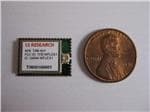
 Datasheet下载
Datasheet下载

